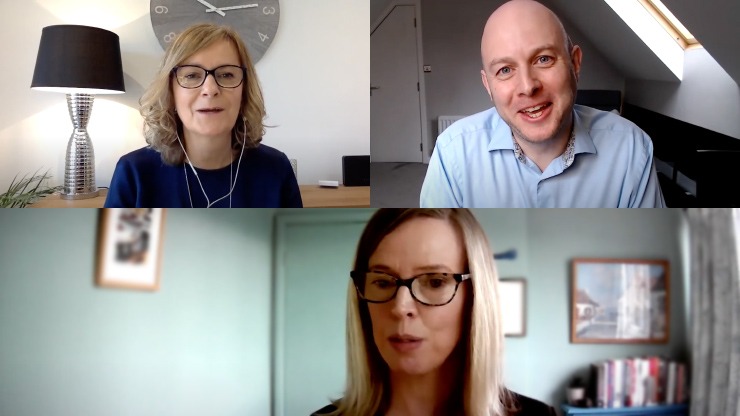- Accessibility
- Request a Call Back
- Quick Drop CV
- Submit Timesheet
- About Us
- For Candidates
- For Clients
- News & Views
- Events

On 24th February 2021 Morgan Hunt hosted a webinar on the power of team coaching titled ‘Building inclusive teams for growth’. We were joined by team coaching experts Lucy Widdowson and Paul J Barbour, who shared how team coaching can be used to develop inclusive teams which benefit from increased performance.. Read the summary of the webinar below or watch the full recording at the bottom of this page:
Following the events of 2020, the importance of diversity and inclusion for organisations is being recognised more and more. Organisations are becoming actively engaged in building diverse and inclusive workplaces as a result of demands from staff for greater representation, but also due to the proven benefits for organisations. Benefits include:
It is clear that, for organisations, there is a lot to be gained, but how can improved diversity and inclusion be achieved? There are several factors that influence the diversity and inclusion of a workplace, but Lucy Widdowson and Paul J Barbour suggest developing more inclusive teams through team coaching is a good place to start.
When we talk about the diversity and inclusivity of teams, what do we mean? Diversity describes how team members are different from each other, improving the range of ideas and perspective brought to the table. Inclusivity, however, describes the style of interaction (the actions and strategies) that help people feel included, which is essential for effective teams and organisations. Diversity improves the variance of ideas, but inclusivity is what enables these thoughts to be shared.
The diversity of teams can be improved through recruitment, whereas inclusivity can only be built through a focus on the interpersonal relationships of teams. In order for team members to feel included, psychological safety and trust must exist within the group. Individuals must believe that the group is a safe place for interpersonal risk taking. Only then can members feel truly comfortable to contribute and share their ideas.
So how can inclusivity be improved? In the team coaching sessions that Lucy and Paul run with organisations throughout the world, they work with teams to develop empathy and to determine the shared purpose, values and beliefs of the group. Empathy leads to understanding and having shared goals ensures the group moves together in the same direction. One exercise they encourage people to use to build empathy is to watch the news, then try to understand a person who has an opposing view to you and think about what you would say to them.
“Coaching that helps teams work together, with others and within their wider environment, to create lasting change by developing safe trusting relationships, better ways of working and new thinking, so that they maximise their collective potential, purpose and performance goals”
Building psychological safety and trust can be achieved through a number of team coaching methods and exercises. Through their work, Lucy and Paul have defined 7 characteristics of high performing teams. These are:
For improving inclusivity, Lucy and Paul recommend focussing on the awareness and relatedness. Here are some exercises you can use to maximise these characteristics:
Paul and Lucy also suggest using scenarios to open honest conversations about how people would respond. Through this people can feel safe to share without judgement, as well as be corrected if their response could be improved. Here are some scenarios for you to use and discuss with your teams:
Amy in a team meeting uses an incorrect terminology for a colleague in another team saying ‘Jo the blind person’. What do you do?
Every time Amin makes a suggestion, another team member Tom ignores them and speaks over them. What do you do?
You have a culture of all going to lunch together when in the office or spending time chatting informally when working virtually at the end of the day on a Friday. Ray doesn’t join in. What do you do?
By applying some of the techniques, you can begin to create more trust within your teams which will improve communication and performance. If you would like to learn more about team coaching and how it can be used to develop high performing teams, Lucy and Paul recently published their first book titled “Building top performing teams”. You can purchase a copy via the links below.